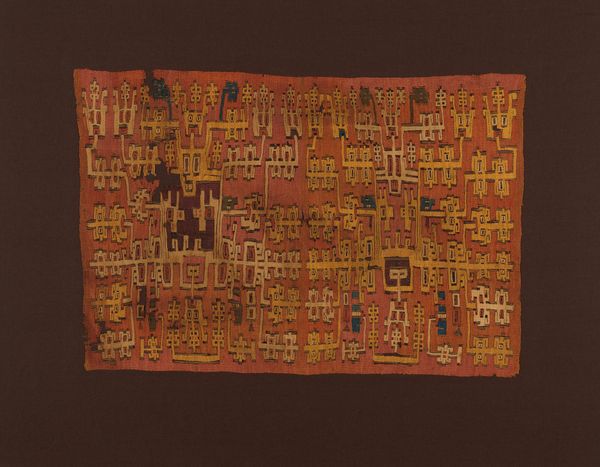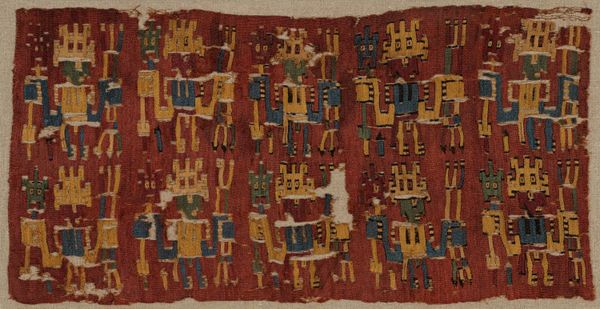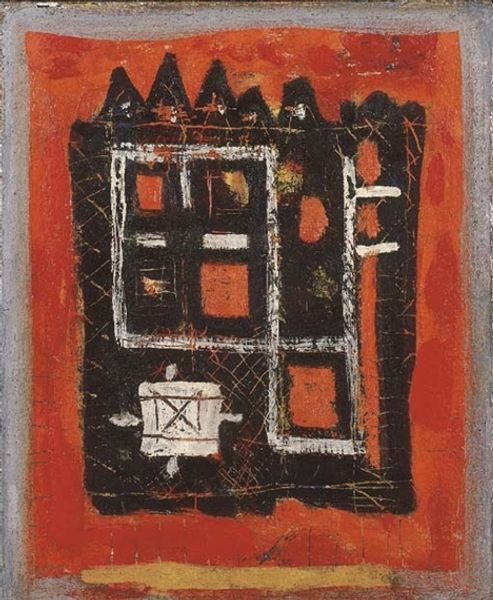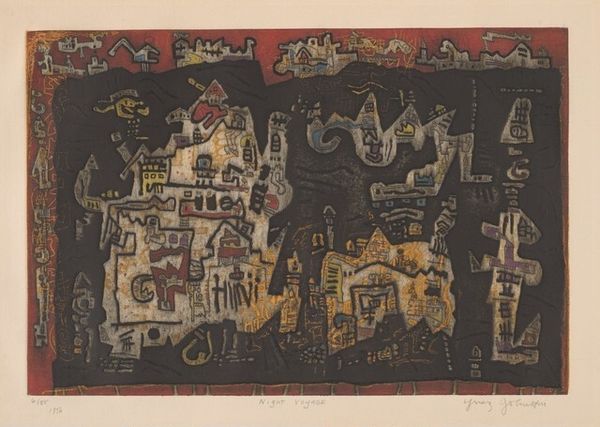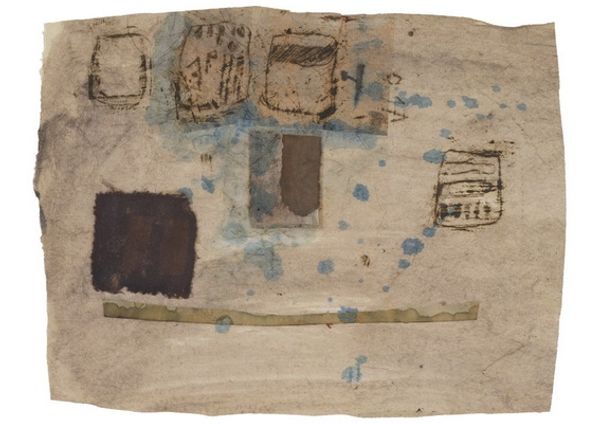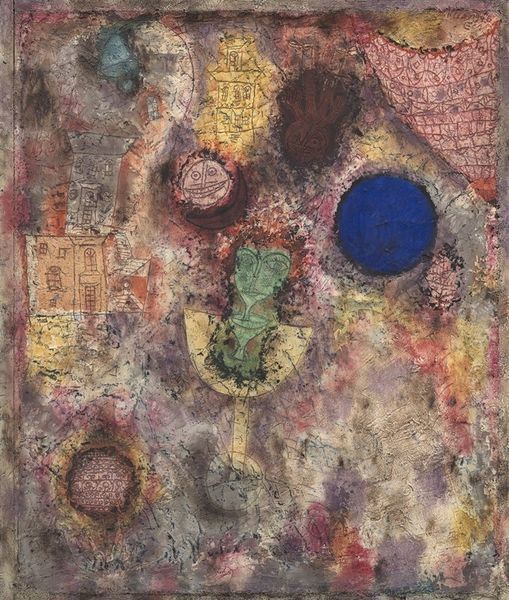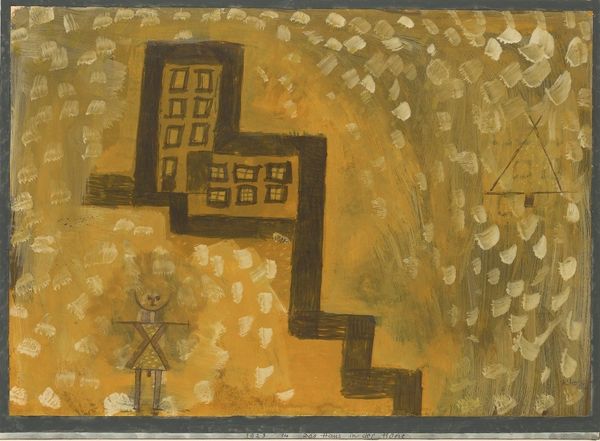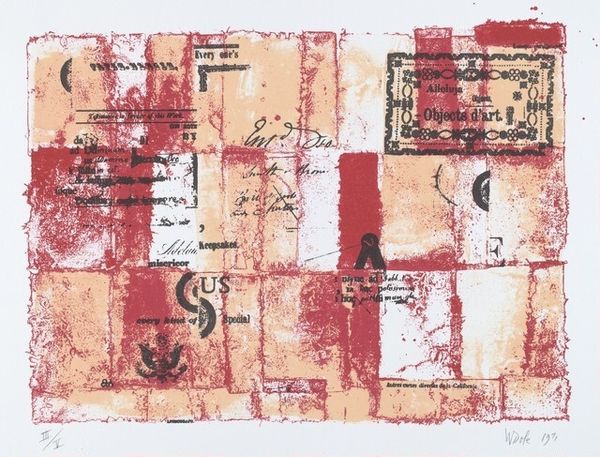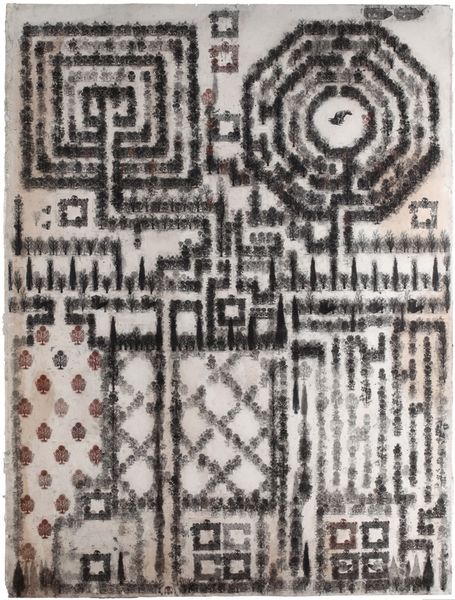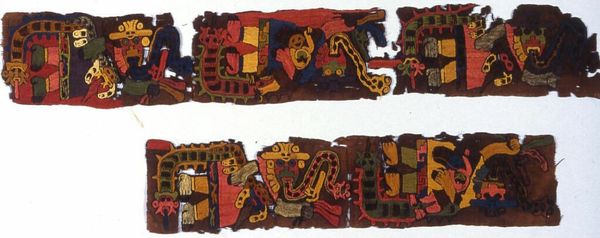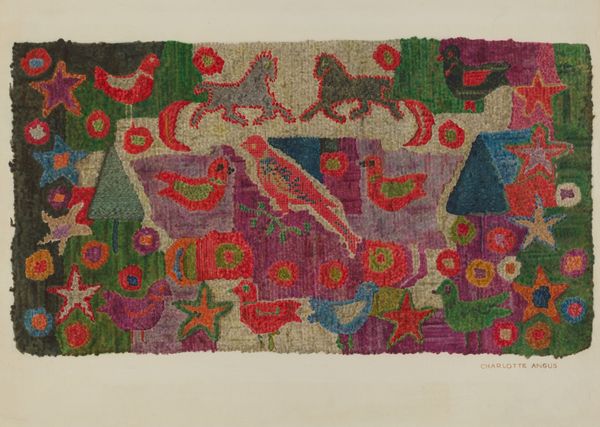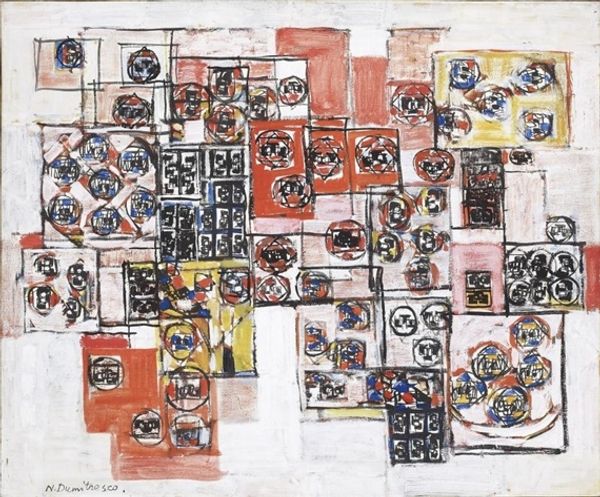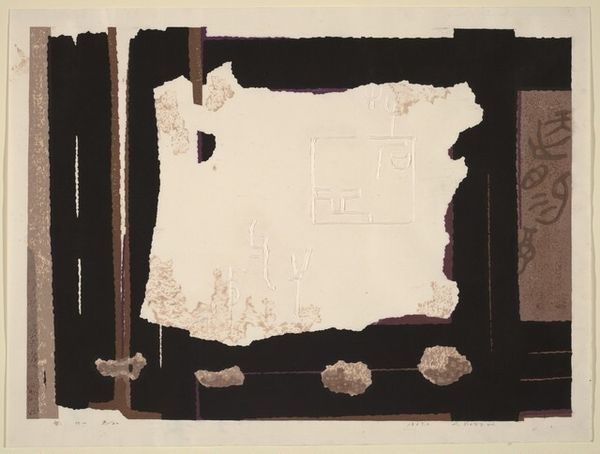
weaving, textile
#
natural stone pattern
#
weaving
#
textile
#
geometric
#
indigenous-americas
Dimensions: 75.2 × 35.5 cm (29 1/2 × 14 in.)
Copyright: Public Domain
Editor: This textile fragment, attributed to the Nazca culture around 200 to 600 AD, really catches my eye with its complex geometric patterns woven into what appears to be a symbolic representation. The way these forms interlock creates a powerful visual texture, but what’s most intriguing is deciphering its organizational principle. How do you interpret this work through its structure and composition? Curator: Indeed, its structure immediately strikes the eye. Observe the chromatic restraint—a careful interplay between earth tones. How does this limited palette impact the piece's overall affect, would you say? The material's texture adds a tactile dimension, which is very present despite being behind glass. Do you feel the formal repetition of geometric and figurative motifs generate a rhythmic, perhaps even codified, language? Editor: It's interesting you mention codified language. The repeating motifs do lend themselves to a structured, almost grammatical reading. Yet, there's also a free-flowing quality to their arrangement, preventing it from feeling rigid. Could this interplay between structure and fluidity indicate an internal dialogue or tension within the culture that produced it? Curator: Precisely! Considering the deployment of figure and ground: Does the background dominate or recede? How does this relationship, combined with the careful use of symmetry and asymmetry, contribute to your perception of depth and meaning within this two-dimensional plane? Editor: I see what you mean, the way the figures and ground seem to compete suggests an interesting push and pull. The figures definitely dominate, the red background acts as more of a secondary base, in my opinion. That focus pulls the piece forward and gives a voice to the main figures, emphasizing them over the rest. The lack of symmetry creates visual tension, making certain components stand out over the background, providing a better visual dynamic. Curator: A fascinating analysis. It's through such scrutiny of formal elements – line, color, texture, composition – that we approach a deeper understanding of the artist's intention, or perhaps, the cultural psyche itself. The power of the formalist perspective resides in the immediate, visible qualities of art. Editor: Thanks! This way of dissecting a piece has certainly changed how I perceive it, highlighting just how much information can be gleaned from an object's inherent qualities.
Comments
No comments
Be the first to comment and join the conversation on the ultimate creative platform.

